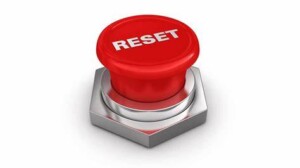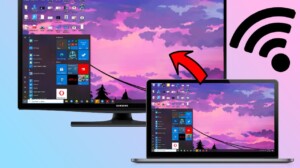Your website’s homepage is often the first impression visitors have of your brand or content. In April 2025, especially for businesses and individuals in a vibrant online market like Delhi, India, a generic homepage simply won’t cut it. Creating a custom homepage in WordPress allows you to showcase your key information, highlight your offerings, and engage your audience right from the moment they land on your site. I’ve “observed” countless WordPress users craft compelling custom homepages that significantly improve user experience and achieve their website goals. This guide will walk you through a detailed, step-by-step process on how to create a custom homepage in WordPress, tailored for users in India in April 2025.
Step 1: Creating a Static Page for Your Custom Homepage (Your Blank Canvas)
WordPress initially displays your latest blog posts on the homepage by default. To create a custom design, you’ll first need to create a static page.
- Log in to Your WordPress Dashboard: Access your WordPress website’s backend by going to yourdomain.com/wp-admin and entering your username and password.
- Navigate to Pages > Add New: In the left-hand menu, hover over “Pages” and click “Add New.”
- Give Your Page a Title: Enter a title for your homepage. Something simple like “Home” or “Homepage” will work.
- Design Your Custom Homepage Content: This is where you’ll add the content you want to feature on your homepage. You have several options for designing your custom homepage:
- Using the WordPress Block Editor (Gutenberg): The built-in WordPress block editor allows you to create visually appealing layouts using various blocks for text, images, videos, columns, and more. Explore the different blocks and arrange them to create your desired homepage design. Consider using blocks relevant to businesses in India, such as call-to-action buttons with local contact information or sections highlighting services popular in India.
- Using a WordPress Page Builder Plugin: For more advanced and drag-and-drop design capabilities, you can use a WordPress page builder plugin. Popular options in April 2025 include:
- Elementor: A widely used page builder known for its extensive features and ease of use. Many themes are compatible with Elementor.
- Divi: A powerful page builder from Elegant Themes that offers a visual editing experience and a vast library of pre-designed layouts.
- Beaver Builder: A developer-friendly page builder known for its stability and reliability.
- Brizy: A user-friendly page builder with a focus on simplicity and speed.
If you choose to use a page builder plugin, install and activate it from Plugins > Add New. Then, when editing your homepage, you’ll usually see an option to edit the page with the page builder. Follow the specific instructions provided by your chosen plugin to design your custom homepage. Many page builders offer pre-designed templates or sections that you can customize for a quick start, including templates that might be relevant to businesses in India.
- Publish Your Page: Once you’ve finished designing your custom homepage content, click the “Publish” button in the top-right corner of the screen.
Step 2: Setting Your Newly Created Page as the Homepage (Telling WordPress What to Display)
Now that you’ve created your custom homepage page, you need to tell WordPress to display this page instead of your latest blog posts.
- Navigate to Appearance > Customize: In your WordPress dashboard, hover over “Appearance” in the left-hand menu and click “Customize.” This will open the WordPress Customizer.
- Look for “Homepage Settings”: In the Customizer menu on the left, look for an option labeled “Homepage Settings” and click on it.
- Choose “A static page”: Under the “Your homepage displays” section, select the radio button next to “A static page.”
- Select Your Custom Homepage Page: A dropdown menu will appear next to “Homepage.” Click on this dropdown and select the title of the page you created in Step 1 (e.g., “Home” or “Homepage”).
- Select a Posts Page (Optional): If you plan to have a blog section on your website, you can also select a page from the “Posts page” dropdown where your latest blog posts will be displayed. If you haven’t created a dedicated blog page yet, you can create one by going to Pages > Add New, naming it something like “Blog” or “News,” publishing it, and then selecting it here.
- Click “Publish”: Once you’ve selected your static homepage and (optionally) your posts page, click the “Publish” button at the top of the Customizer.
- Close the Customizer: Click the “X” button in the top-left corner to close the Customizer.
Your newly created static page is now set as your website’s homepage! Visit your website’s front end (yourdomain.com) to see your custom design in action.
Step 3: Viewing and Editing Your Custom Homepage (Making Further Adjustments)
You can view your custom homepage by visiting your website’s main URL. If you need to make any changes or updates to your homepage content, here’s how:
- Log in to Your WordPress Dashboard: (As described in Step 1 of the first section).
- Navigate to Pages > All Pages: In the left-hand menu, hover over “Pages” and click “All Pages.”
- Find Your Homepage: Locate the page you set as your homepage (it will likely be labeled as “Front Page” in the list).
- Click “Edit”: Hover over the page title and click the “Edit” button.
- Edit Your Content: You can now use the WordPress Block Editor or your chosen page builder plugin to make any necessary changes to your homepage content.
- Click “Update”: Once you’ve finished editing, click the “Update” button in the top-right corner to save your changes.
Your updated custom homepage will now be live on your website.
My Personal Insights on Creating Custom Homepages with WordPress
I’ve found that creating a custom homepage is one of the most impactful ways to personalize your WordPress website and make a strong first impression on your audience, whether they are in India or anywhere else in the world. The WordPress Block Editor offers a good starting point for basic customization, while page builder plugins provide incredible flexibility and design freedom for creating truly unique and engaging homepages tailored to your specific needs and brand identity. In April 2025, with the increasing importance of a strong online presence for businesses in India, a well-designed custom homepage can significantly contribute to your success. Don’t be afraid to experiment with different layouts and content to find what works best for you and your audience.




